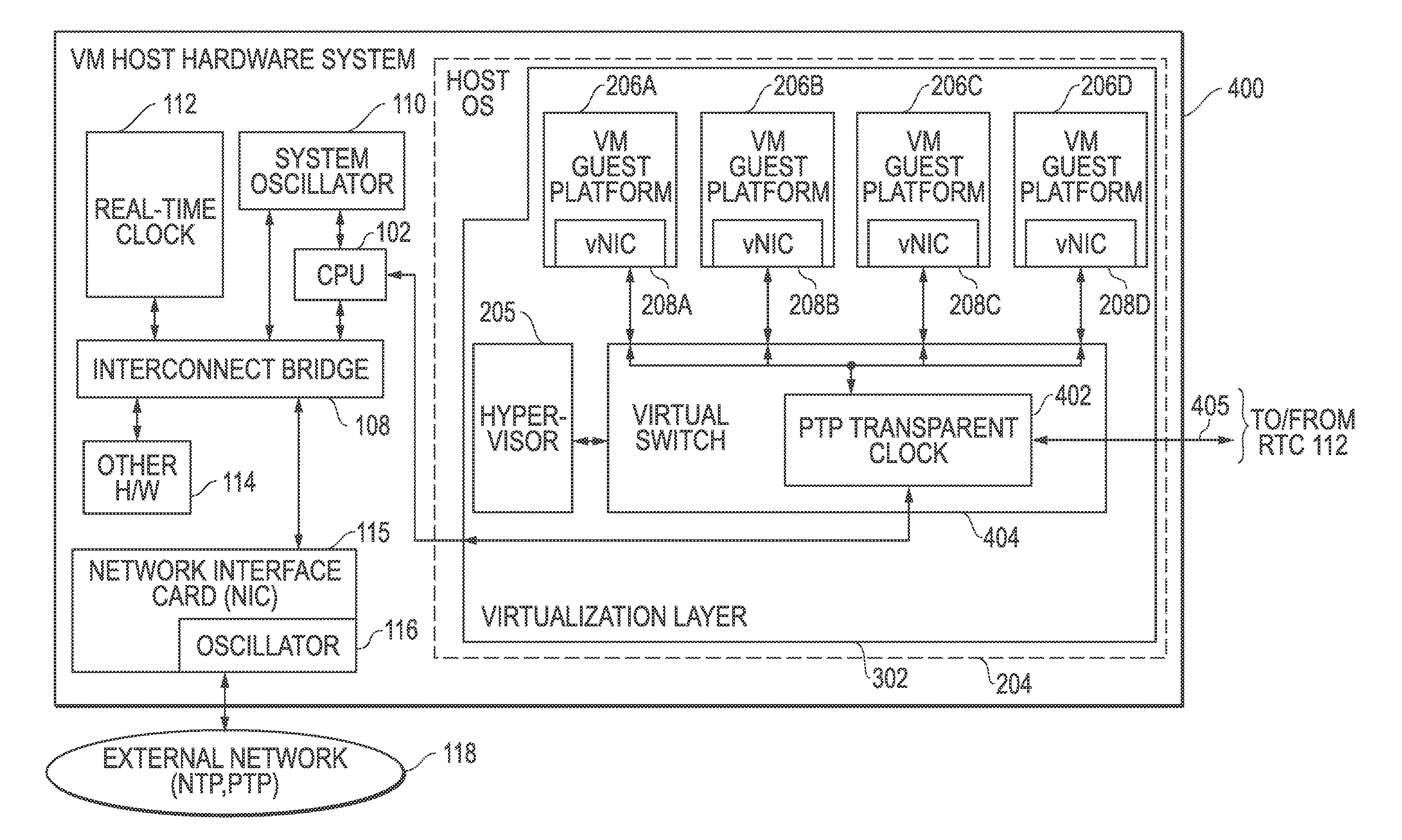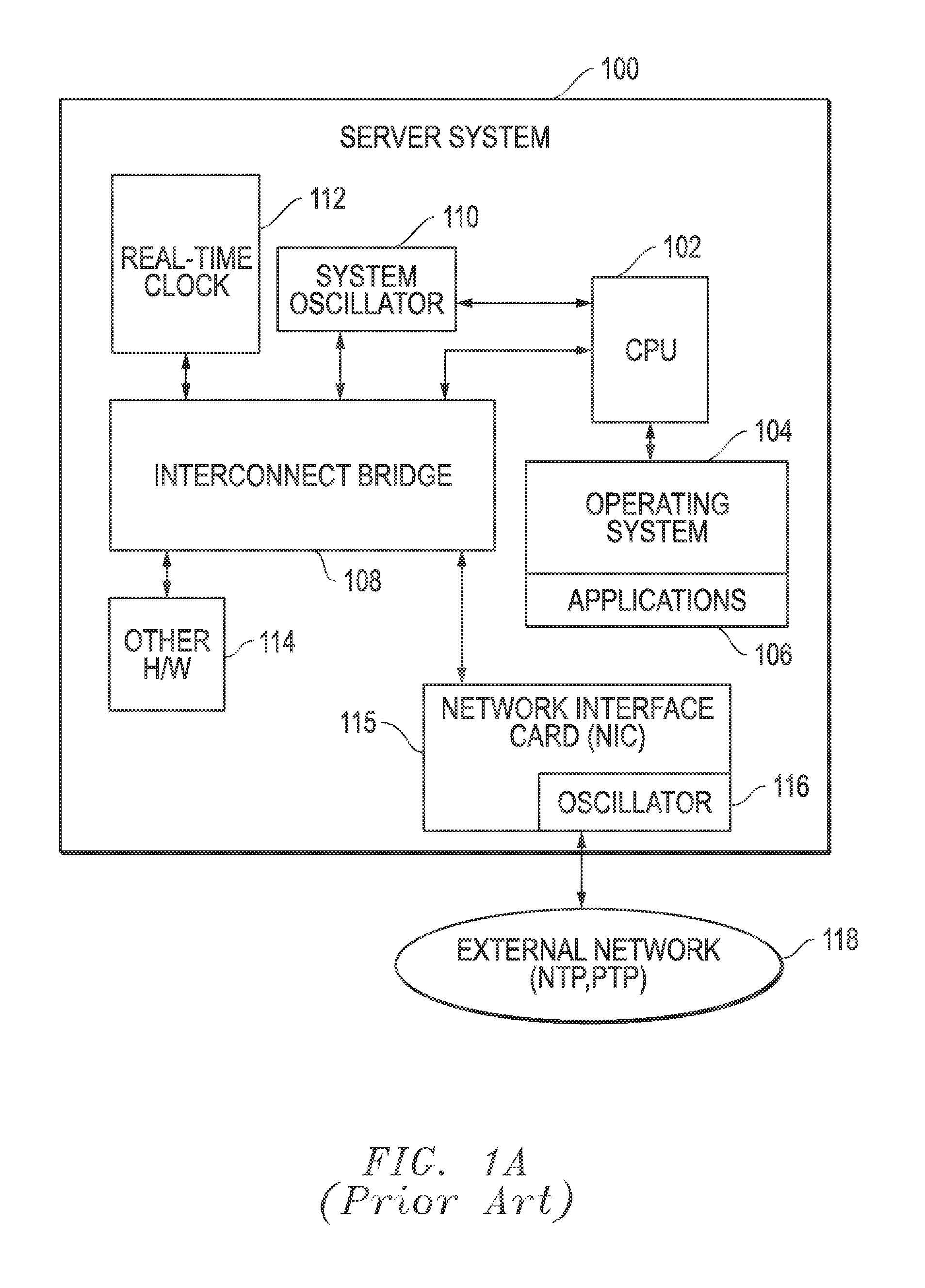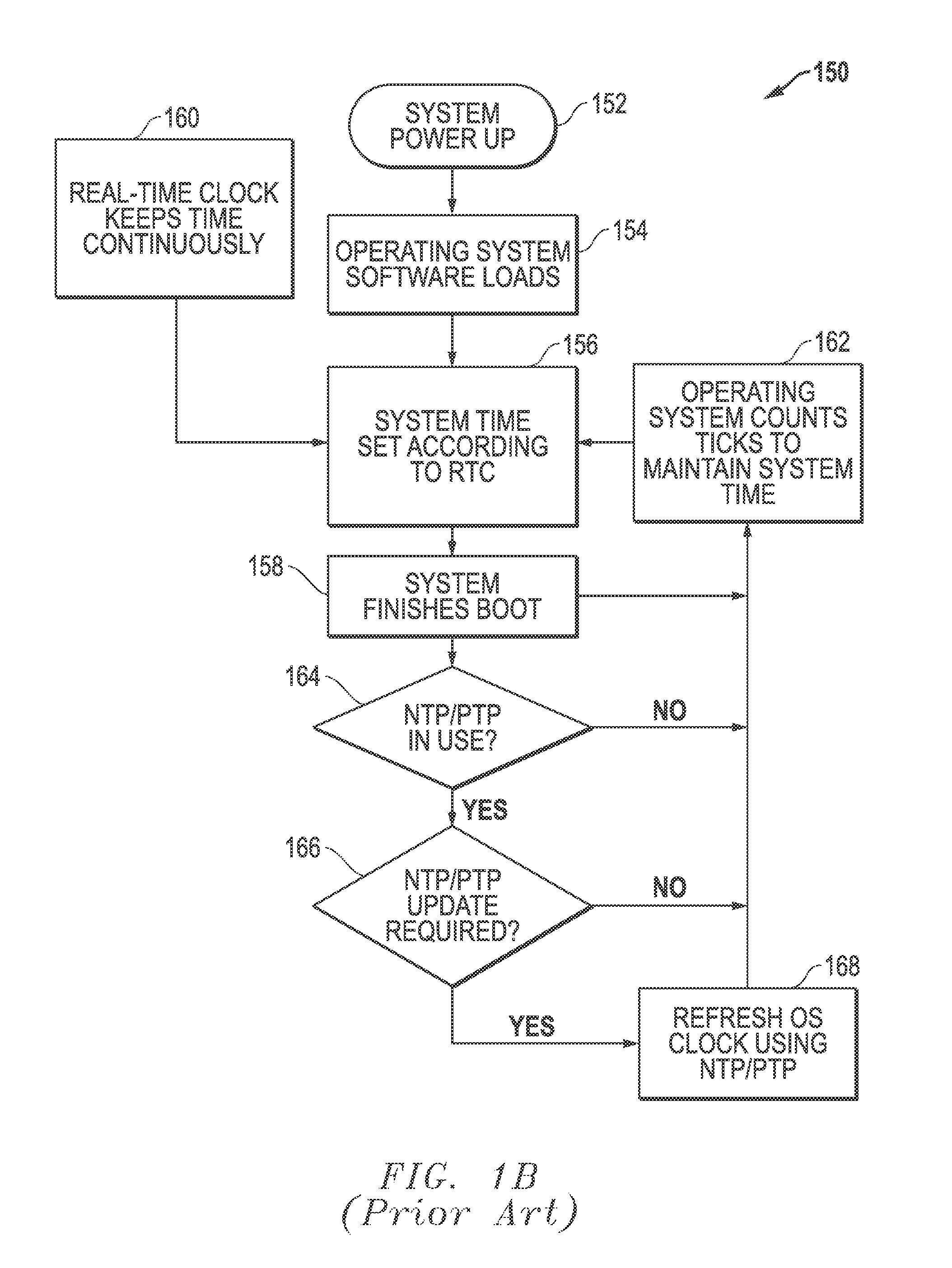Network Packet Timing Synchronization For Virtual Machine Host Systems
a virtual machine host system and network packet technology, applied in the field of network packet communication systems, can solve the problems of large timing errors, high variability of vm platforms, and reduce the accuracy of ntp/ptp
- Summary
- Abstract
- Description
- Claims
- Application Information
AI Technical Summary
Benefits of technology
Problems solved by technology
Method used
Image
Examples
embodiment 300
[0054]In part, the VM host hardware system 400 operates in a similar fashion to embodiment 300 of FIG. 3 (Prior Art). The VM host hardware system 400 includes a central processing unit (CPU) 102 that runs a host operating system 204, a system oscillator 110, a real-time clock 112, a network interface card (NIC) 115, and other hardware (H / W) 114 coupled to communicate with the CPU 102 through an interconnect bridge 108. The NIC 115 can also include an oscillator 116, and the system oscillator 110 can also be directly connected to the CPU 102. The real-time clock 112 can be implemented using an integrated circuit including a real time clock (RTC) circuitry and non-volatile read only memory (RTC / NVRAM). The VM host hardware system 400 also includes a hypervisor 205 that executes as part of the virtualization layer 302 on top of the VM host operating system (OS) 204. This hypervisor 205 provides access to a plurality of VM platforms 206A, 206B, 206C, and 206D that emulate processing sys...
embodiment 400
[0056]As described above, the virtual switch 404 provides virtual network packet communications among the VM platforms 206A, 206B, 206C, and 206D that are hosted as guest processes within the host operating system 204. In particular, the virtual switch 404 communicates with the virtualized NICs 208A, 208B, 208C, and 208D for the VM guest platforms 206A, 206B, 206C, and 206D to forward network packets among the VM guest platforms 206A, 206B, 206C, and 206D and between the VM guest platforms 206A, 206B, 206C, and 206D and the external network 118. As described above, the virtual switch 404 can operate using the system oscillator 110. However, with respect to embodiment 400 for FIG. 4, the virtual switch also has access to the hardware real-time clock (RTC) 112 through communication link 405. As also described herein, the transparent clock 402 allows for determination of intra-switch delays for packets traversing the virtual switch 404 and thereby allows for correction of timing inform...
embodiment 590
[0066]FIG. 5E is a diagram of an example embodiment for a new network packet 590 generated by the virtual switch 404 to provide intra-switch delay information. For the embodiment shown, the network packet 590 includes a source identifier (SID) field 591, a target identifier (TID) field 592, and one or more additional fields 593. The new network packet 590 also includes a field 594 for the residence time value. When a packet is communicated through the external network 118, a timestamp value is added to the timestamp field 558 to indicate the current time at the sending system. For embodiment 590, the residence time value (RTV) determined by the packet residence timer 532 is added to the field 594 within the new packet 590 to account for the intra-switch time delay associated with the packet as it traverses the virtual switch 404.
[0067]It is noted that FIGS. 5B-E provide example embodiments of techniques to communicate the intra-switch delay information from the virtual switch 404 to...
PUM
 Login to View More
Login to View More Abstract
Description
Claims
Application Information
 Login to View More
Login to View More - R&D
- Intellectual Property
- Life Sciences
- Materials
- Tech Scout
- Unparalleled Data Quality
- Higher Quality Content
- 60% Fewer Hallucinations
Browse by: Latest US Patents, China's latest patents, Technical Efficacy Thesaurus, Application Domain, Technology Topic, Popular Technical Reports.
© 2025 PatSnap. All rights reserved.Legal|Privacy policy|Modern Slavery Act Transparency Statement|Sitemap|About US| Contact US: help@patsnap.com



